This is an authorized translation in English of a post in French by @terresco: De Cape Town à Mombasa, 3 mois, 8 pays, 12 500 km – La Tanzanie 3
As my primary language is not English, there are probably some mistakes in my translation.
Remember that the person who speaks here is NOT me, Vincent Celier (@vcelier), but @terresco, a French guy.
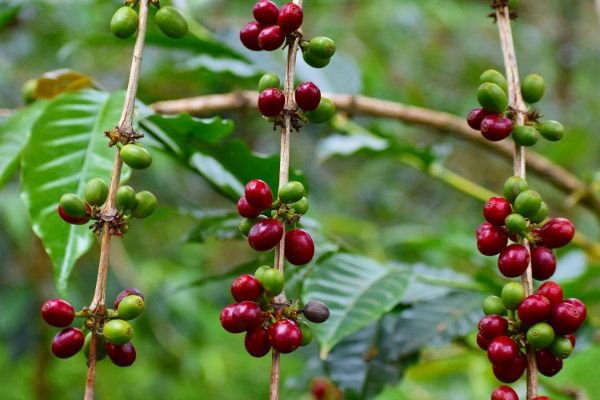
The tour of the Kilimanjaro massif by car takes a little time but it is a beautiful walk through the diversity of landscapes crossed.
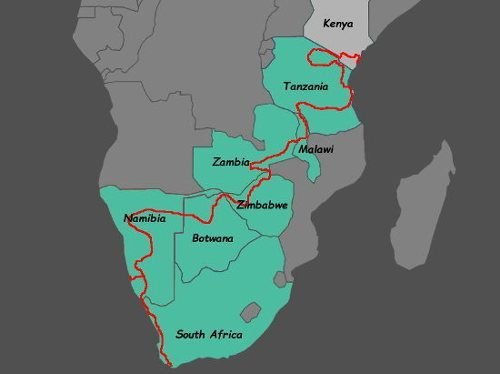
Landscapes also vary with altitude. Inward we climb quickly in the massif and the landscape changes as in most mountains of the world. For off-piste enthusiasts, the more you ride, the more complicated it is, you just have to turn around when you have fulfilled your need for adventure.
There was a meeting that I loved a lot during this trip, the one with an old gentleman to whom we had asked for advice for the camp in the evening and started a little conversation. He had spent his life working in coffee, very present on this southern slope. We felt a deep passion, we wanted to share it. That's how, after a cool night and an awakening at the feet of the famous snows of Kilimanjaro, our new friend came to pick us up for a pedestrian discovery of the plantations of his village. Diving into the world of coffee.
First you have to walk through the paths crisscrossing a thick forest. Our friend wears his best clothes, I think he is as happy to make us discover his world as we to visit. These seemingly forgotten paths are in fact very popular with locals. They go to the market or school, always a joke or a word of welcome to the lips of the stranger. To make him feel at home.
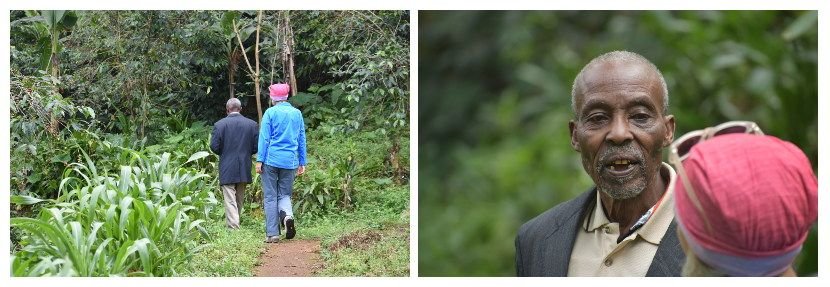
The coffee plant is a small shrub that makes some kinds of seeds as can be seen in the photo at the top of the article. They are called berries when they are still on the tree, probably because they turn red when they are ripe. Before making the seeds of course the plant makes flowers, there are just a few at this time, that our guide finds to teach us.

You start with picking. You have to choose the most red berries, one by one. It is a long and entirely manual work. I guess in big farms they pick up in clusters. Here the plantations are tiny and familial. The groupings are then carried out by complex systems of purchasing cooperatives which always give the same result: the profit to the distributors and the minimum survival for the producers.
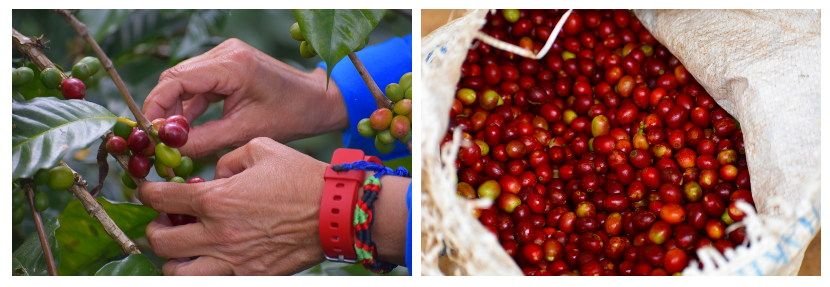
The farmer's job can stop there if he sells the grain as is. For our pleasure, there is no question that the old gentleman let us go without teaching us the whole process. Once the harvest is done, remove the bark that protects the coffee bean . It can be done by hand but it is proudly that we are made to discover the miracle machine. Here we are, one to turn the wheel that drives the machine, the other adding the grains harvested and the water necessary for the smooth running of the operation. The eye of the expert, vigilant, corrects and optimizes each of his actions.
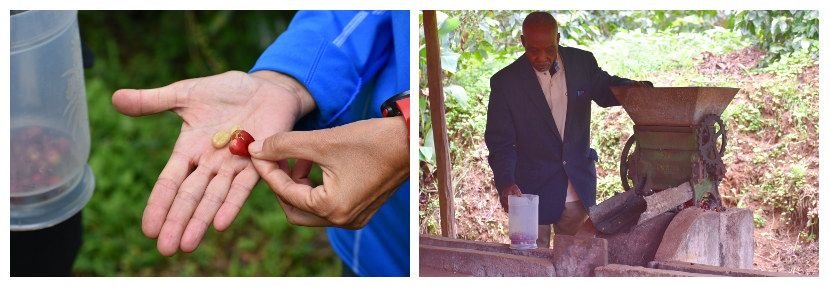
The barks leave on one side the naked grains of the other. Now you have to clean them from an invisible layer, a little greasy. For this you must let them soak about 24 hours in clear water that you renew for several rinses. There is a small stream, arriving directly from the heights of Kilimanjaro, which provided us with a beautiful clear and transparent water. The beans are pampered, washed and washed again with the patient attention of the baker who kneads his dough.
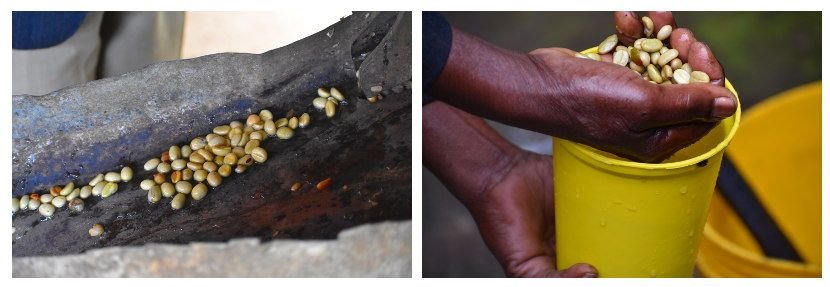
Once rinsed well, it is necessary to put the beans to dry. We will not have to wait to continue our journey towards coffee because there are a number on the dryer for different durations. We can easily observe the evolution. I am amazed by the passion that feeds this old gentleman. It touches the beans, with delicacy, with tenderness not to say love. Probably many memories that go up in his head. I forget for a moment coffee to imagine his life in a space at once so small and infinite.
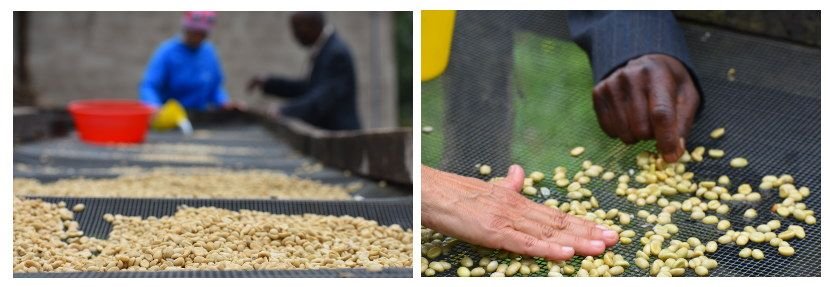
The drying time depends on the weather, between two and three weeks. Each grain is observed manually, discarded without consideration if it is not perfect. I came out of my reveries by the imperative order to take without delay a small amount of selected grains for the future. Fortunately my wife is more attentive, coffee is not made for dreamers, it's serious. The beans are placed in a mortar, beaten, to rid them of a thin skin that appeared on drying. Then, as for all grains in Africa, we use the small current of air to separate the grains from the dust so light that the wind carries them away when the grains are thrown in the air, a little like we make crepes in France .
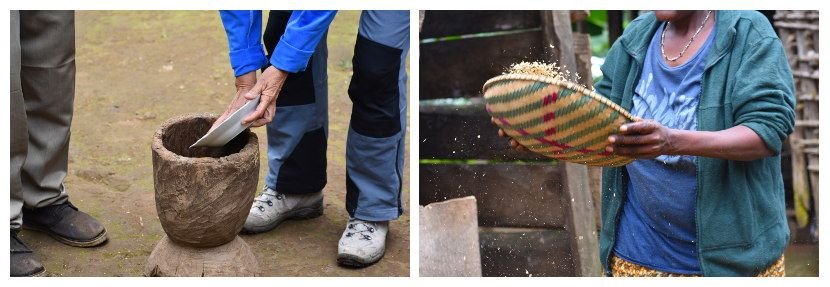
At each step the grains are inspected, the slightest defect is eliminatory, the sort is ruthless. A fire was lit a little further and a thick, coffee-colored saucepan for having resisted so many domestic fires was put there. The beans are placed in it and stirred full time. Monitored like milk on the fire, we are roasting the coffee.

It is not long, in a few minutes the beans take the color that you know and are removed from the fire.
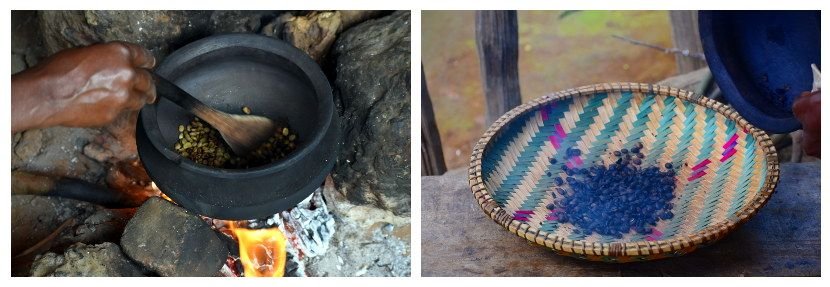
I can see my grandmother grind the grains with her manual mill blocked between the legs. Coffee was purchased in grain in her day. Here no mill, we put the roasted beans in the mortar and we go to work. Harder and especially longer than it seems to get a homogeneous powder.

There is nothing else to do except to throw the powder obtained in the saucepan back on the fire, filled with water this time, to obtain our coffee. It must of course be filtered to remove the powder, we want Tanzanian coffee not Turkish coffee.
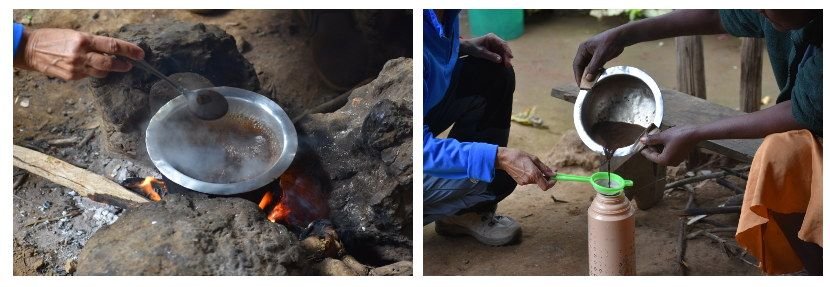
We only have to savor while our teacher pushes the pedagogy until he summarize the different stages of processing, from the coffee plant on the right to the cup on the left.

What a pleasure to meet people passionate about their lives and generous in sharing. Tomorrow we will regretfully leave this place, rich of another unforgettable encounter, a memory that can not be bought. The big Tanzanian parks are waiting for us.

-- @terresco
Africa, the long crossing
From Cape Town to Mombasa: South Africa
From Cape Town to Mombasa: Namibia
From Cape Town to Mombasa: Botswana
From Cape Town to Mombasa: Zimbabwe
From Cape Town to Mombasa: Zimbabwe, part 2, by @terresco
From Cape Town to Mombasa: Zimbabwe, part 3, by @terresco
From Cape Town to Mombasa: Zambia, by @terresco
From Cape Town to Mombasa: Malawi, by @terresco
From Cape Town to Mombasa: Tanzania #1, by @terresco
From Cape Town to Mombasa: Tanzania #2, by @terresco
